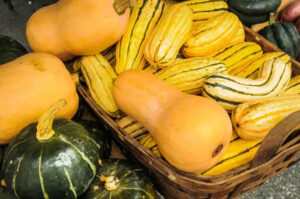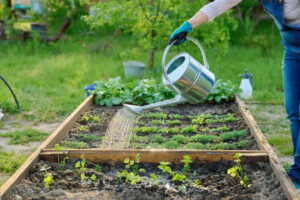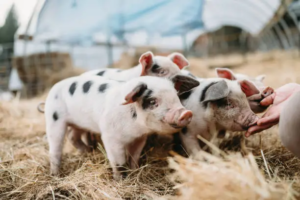Row crops are a fundamental component of modern agriculture, representing a large portion of the world’s food and fiber production. These crops are planted in rows wide enough to allow the use of machinery for various agricultural processes such as planting, cultivation, irrigation, and harvesting. This article delves into the significance, types, and management of row crops, highlighting their role in global food security and agricultural sustainability.
What Are Row Crops?
Row crops are typically large-scale crops planted in rows with adequate spacing to facilitate mechanical farming operations. This method allows for efficient planting, maintenance, and harvesting, making it suitable for crops grown on a commercial scale. The rows also help in managing pests, diseases, and weeds by allowing for targeted treatments and interventions.
Common Types of Row Crops

Several crops fall under the category of row crops, each playing a critical role in agriculture:
- Corn: One of the most widely grown row crops, corn is used for food, animal feed, and biofuel production. Its versatility and high yield make it a staple in many agricultural systems.
- Soybeans: Another major row crop, soybeans are a key source of protein and oil. They are used in various food products, animal feed, and industrial applications.
- Cotton: Grown primarily for its fiber, cotton is a significant row crop in the textile industry. The plant also produces cottonseed, which is used for oil and animal feed.
- Wheat: A staple food crop, wheat is grown extensively for its grain, which is used to produce flour for bread, pasta, and other food products.
- Alfalfa: A valuable forage crop, alfalfa is used extensively for animal feed, particularly for dairy cattle, due to its high nutritional content.
- Barley: Grown for both animal feed and as a key ingredient in beer and whiskey production, barley is a versatile row crop.
- Peanuts: Often grown in rotation with other row crops, peanuts are valued for their protein-rich nuts and their ability to fix nitrogen in the soil, improving soil fertility.
- Sorghum: Known for its drought tolerance, sorghum is used for food, animal feed, and biofuel production.
The Importance of Row Crops

Row crops are vital for several reasons:
- Food Security: Many row crops are staple foods that provide essential nutrients to billions of people worldwide. Their high yields contribute significantly to global food supplies.
- Economic Impact: Row crops are a major source of income for farmers and are crucial to the agricultural economy. They support numerous industries, including food processing, textile manufacturing, and biofuel production.
- Agricultural Efficiency: The use of machinery in row crop farming increases efficiency and productivity, allowing for the cultivation of large areas with less manual labor.
Management Practices for Row Crops

Effective management of row crops involves several key practices:
- Soil Preparation: Proper soil preparation is essential for optimal crop growth. This includes tilling, fertilization, and ensuring proper drainage.
- Planting: Precision planting techniques help in achieving uniform plant spacing and depth, which are crucial for maximizing yields.
- Irrigation: Efficient irrigation systems, such as drip or center pivot irrigation, ensure that crops receive adequate water without wastage.
- Pest and Weed Control: Integrated pest management (IPM) and the use of herbicides help in controlling pests and weeds, reducing crop loss and maintaining plant health.
- Harvesting: The use of modern machinery for harvesting reduces labor costs and minimizes crop damage, ensuring that produce is collected efficiently and at the right time.
Challenges in Row Crop Farming

Despite their advantages, row crops also pose certain challenges:
- Soil Erosion: The frequent tilling associated with row cropping can lead to soil erosion, reducing soil fertility over time.
- Pesticide Use: The reliance on chemical pesticides for pest control can have environmental and health impacts, necessitating the need for sustainable alternatives.
- Water Use: Row crops often require significant water resources, which can be a challenge in areas with limited water availability.
Row crops are a cornerstone of modern agriculture, providing essential food, fiber, and biofuel resources. Their efficient production systems, supported by mechanization and advanced agricultural practices, make them indispensable in meeting the demands of a growing global population. However, sustainable management practices are crucial to address the environmental challenges associated with row cropping, ensuring that these vital crops can continue to support agriculture for generations to come.










